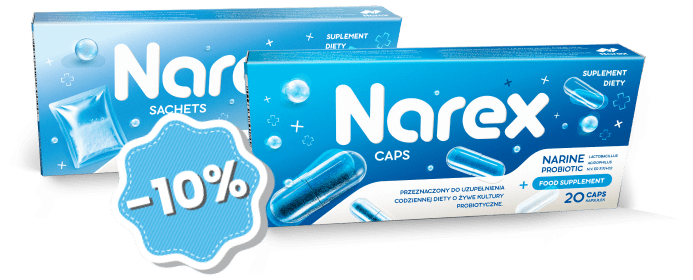
Narine – The Story of an Extraordinary Probiotic
Why is it worth exploring the story of Narine? Because it can help maintain internal balance, support immunity, and improve overall well-being. Its history began in the 1960s in Armenia and was nearly forgotten for decades. Today, however, Narine is returning to play an essential role in supporting human health.
The beginning of Narine
In the 1950s, at a laboratory in Armenia, Professor Levon Akopovich Erzinkyan made a remarkable discovery. Together with his team, he isolated a bacterial strain known today as Lactobacillus acidophilus Er 317/402 – or simply Narine. The strain proved to be exceptionally resistant to the harsh conditions of the digestive tract, including stomach acids and bile.
Moreover, Narine demonstrated the ability to adhere to intestinal walls, protecting the body from harmful pathogens and supporting the normal functioning of gut microbiota.
Years of research and applications
During the 1960s and 1970s, the Narine bacterium gained popularity across the former Soviet Union. It was used to help treat various ailments – from dysbacteriosis to infections, autoimmune diseases, and allergies. Narine-based fermented dairy products became a part of both clinical therapy and everyday nutrition.
Clinical studies conducted in Armenia and Russia showed that this strain had a positive impact on patients suffering from inflammatory bowel diseases, digestive problems, and post-antibiotic complications. Its ability to regenerate intestinal mucosa was especially valued in cases where other treatments had failed.
Narine – challenges and recognition
Despite promising results, Narine’s entry into the global market faced obstacles. At that time, Western medicine had not yet embraced probiotics as a therapeutic tool. Although Western pharmaceutical companies acquired production licenses, the strain was never widely implemented and remained little known outside the USSR.
Nevertheless, research continued. Scientists uncovered new properties of Narine, including immune system stimulation, vitamin synthesis in the gut, and even potential anti-cancer effects. Narine also became the only probiotic officially recommended for newborns and premature infants, significantly improving their health outcomes.
Narine today
Today, the Narine strain is gaining global recognition, including in Poland, where since 2018 Narine-based products have grown increasingly popular. It is especially valued in the context of rising cases of gut dysbiosis-related conditions such as allergies, metabolic disorders, and autoimmune diseases.
What sets Narine apart? It is not only a wide-spectrum probiotic but also a safe preparation suitable for all ages – from infants to the elderly. Its efficacy and safety are supported by decades of clinical research.
A symbol of resilience
Narine is more than a scientific discovery. It symbolizes the determination of researchers who fought for decades for recognition of this remarkable bacterium. In a world facing widespread gut microbiota imbalances, Narine is becoming a vital element of prevention and therapy for many conditions.
Will Narine become a defining element of probiotic medicine’s future? Time will tell whether the discoveries made over half a century ago will find their place in modern healthcare and everyday wellness.







